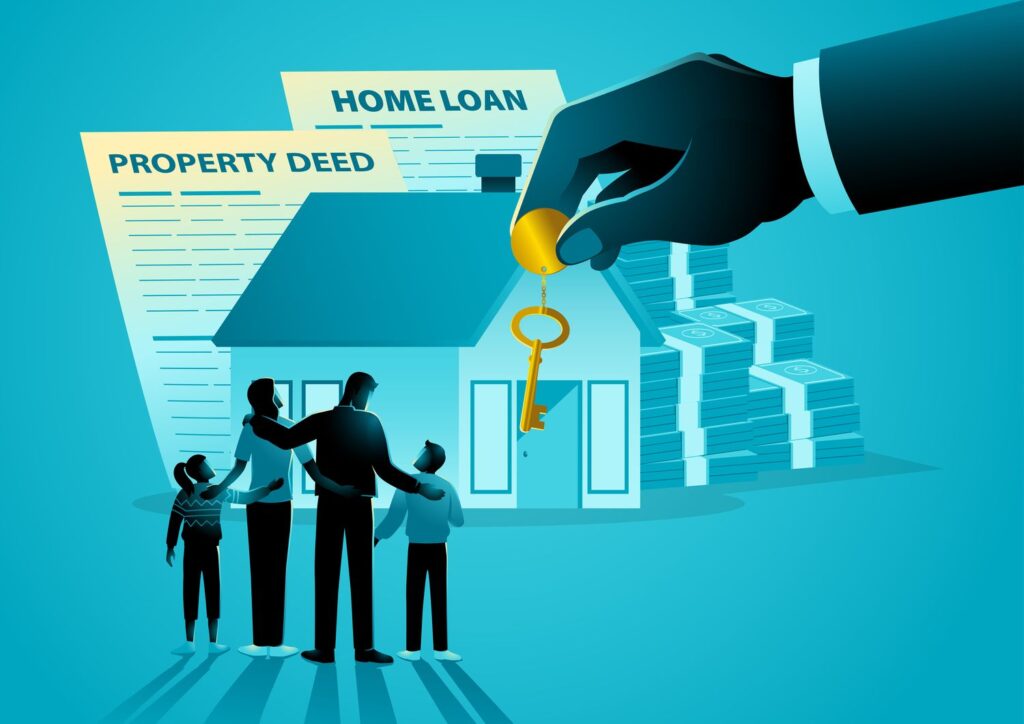Key Takeaways
- President Trump’s 50-year mortgage idea aims to make homebuying easier, but the loans would likely carry higher rates and cost more overall.
- On a median-priced home, a 50-year mortgage could cut payments by about $100, yet it would slow how quickly owners build equity.
- Experts warn that stretching loans that long could backfire, driving prices higher and doing little to fix the nation’s housing shortage.
What Trump Said—And Why It’s Sparking Debate
President Donald Trump recently suggested that homebuyers should have the option of 50-year mortgages to make purchasing homes more affordable, saying in a post on his social-media platform that extending the standard 30-year mortgage could lower monthly payments and “make the American dream affordable again.”
But critics say the idea misdiagnoses the problem. The housing market’s main problem isn’t how long borrowers have to repay—it’s the shortage of homes for sale. Stretching loans over half a century, they warn, might bring mild relief for some buyers but could also push home prices higher and make it harder for homeowners to build lasting wealth.
How a 50-Year Mortgage Would Change What You Pay—And What You Own
On paper, longer mortgages do what they promise: lower the monthly bill. But those smaller payments come at a cost: higher rates, more interest paid, and slower wealth building over time.
No one knows what rate lenders would charge on a 50-year loan, but it would almost certainly be higher than the 30-year rate. Just as 30-year loans cost more than 15-year ones, lenders charge extra to tie up money longer. UBS analyst John Lovallo has suggested assuming about a half-percentage-point bump to estimate the difference.
On a $415,000 home—the current U.S. median price, according to the National Association of Realtors—a buyer putting 20% down would borrow about $332,000. At a 6.50% rate for a 30-year loan, that borrower would pay $2,098 per month in principal and interest.
Stretching the term to 50 years would likely raise the rate to around 7.00%, but the much longer repayment period would still lower the monthly payment. On the same home, Investopedia calculates the 50-year payment at $1,998 per month—only about $100 less. That might help someone on a tight budget, but to many people, it’s not a meaningful amount of savings.
Why This Matters to You
A 50-year mortgage might trim your monthly payment, but it could also raise your total interest costs and delay how fast you build equity. Knowing that trade-off helps you see whether “cheaper now” is worth it being costlier in the long run.
The real drawback comes from how slowly you build home equity. Because more of each payment goes toward interest—and does so for decades—it takes much longer to make progress on the principal.
Here’s the math using the same home, down payment, and mortgage rates: After 10 years, a 30-year borrower would have paid down about $50,000 in principal, compared with only $10,000 for a 50-year loan. At 20 years, the 30-year borrower would have built about $147,000 in equity, while the 50-year borrower would have built less than $32,000.
In other words, the 50-year borrower would have roughly $40,000 less equity after 10 years and $115,000 less after 20—a major gap in long-term wealth building for buyers of the same home.
Why Mortgage Pros Say the Idea Doesn’t Add Up
Economists say the real obstacle to home affordability isn’t the length of a mortgage—it’s the lack of homes to buy. Goldman Sachs estimates the U.S. remains short at least 3 million to 4 million homes, a gap that keeps prices high and frustrates buyers.
That supply problem is why many analysts see ultra-long loans as the wrong fix. A 50-year mortgage might make payments look more manageable, but the cost of that extra time is steep.
“The drawbacks are that a 50-year mortgage results in almost double the interest payments of a 30-year mortgage and a longer path to meaningful home equity,” Realtor.com Senior Economist Joel Berner said.
Berner also warned that looser mortgage terms could backfire. “More flexible financing is essentially a subsidy for housing demand, which will add to the pool and buying power of homebuyers—without increasing the supply of homes, which will drive home prices up,” he said. “The savings from 50-year mortgages may be totally negated by rising home prices.”
In short, longer mortgages might ease payments in the near term but could raise overall costs and push prices higher. As Berner put it, “This is not the best way to solve housing affordability.” Real progress, he said, would come from policies that expand supply and reduce the inflation keeping mortgage rates elevated.
For now, the 50-year mortgage is just talk. But if it ever came to life, the question wouldn’t be whether it makes buying easier—it’s whether stretching a loan that long would ever really make sense, for buyers or the industry.

